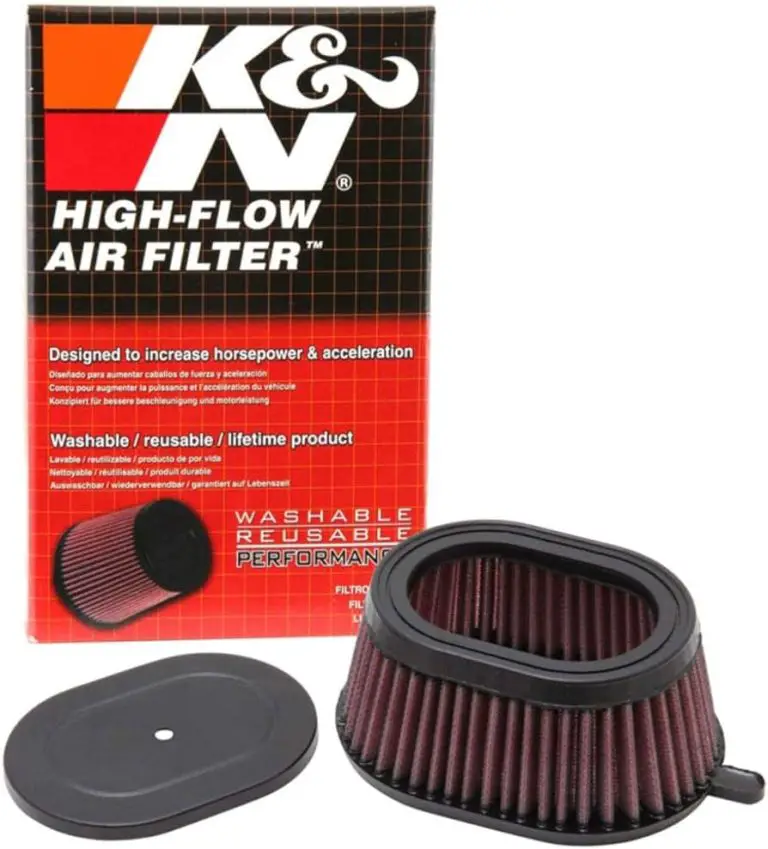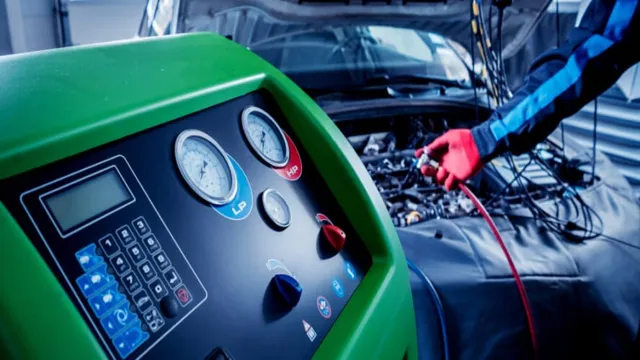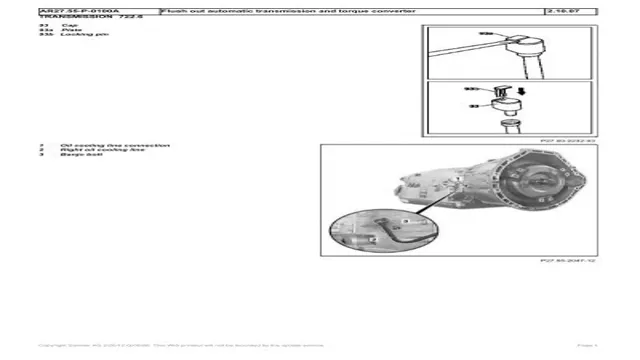Symptoms To Detect Air In Power Steering Of Your Vehicle
Smooth and responsive steering is a crucial aspect of a vehicle’s performance and driver safety. The power steering system plays a vital role in providing effortless control and maneuverability on the road. However, just like any other mechanical system, power steering can encounter issues that affect its functionality. One common problem is the presence of air in the power steering system.
Air can enter the power steering system through various means, such as leaks, low fluid levels, or improper maintenance. When air becomes trapped within the system, it can lead to a range of symptoms that signal potential problems. Recognizing these symptoms early on can help you diagnose and resolve the issue promptly, ensuring the optimal operation of your power steering system.
In this blog post, we will explore the key symptoms that indicate the presence of air in your vehicle’s power steering system. By familiarizing yourself with these signs, you’ll be better equipped to identify the problem and seek appropriate solutions, whether it’s a simple fix or requires professional assistance. So, let’s delve into the symptoms and gain valuable insights into detecting air in the power steering of your vehicle.
What is the Toyota recommended practice for purging the power steering system after refill?
According to the Toyota recommended practice, in order to thoroughly purge the power steering system after a refill, it is advised to first safely jack up the front end of the vehicle. Once that is done, start the engine and proceed to turn the wheels completely from one lock to the other multiple times. By performing this action, any trapped air within the system will be effectively expelled, ensuring a complete purging process.
What Signs To Detect Air In Your Power Steering?
Signs to Detect Air in Your Power Steering:
Whining or Squealing Noises
One of the most common signs of air in the power steering system is a whining or squealing noise when turning the steering wheel. The noise may be more noticeable at lower speeds or during parking maneuvers. This noise is often caused by the air bubbles interfering with the smooth flow of power steering fluid.
Difficulty in Steering
Air in the power steering system can result in increased resistance or difficulty when steering your vehicle. You may find it harder to turn the wheel, especially at slower speeds or when making tight turns. The presence of air disrupts the hydraulic pressure needed to assist with steering, making it feel heavier and less responsive.
Erratic Steering Response
If you notice inconsistent or unpredictable steering response, it could be a sign of air in the power steering system. Air bubbles can cause intermittent loss of power assist, leading to sudden changes in steering effort or response. This can be particularly dangerous during critical maneuvers or emergency situations.
Foamy or Discolored Power Steering Fluid
Check the color and consistency of your power steering fluid. If you find it foamy or aerated, it indicates the presence of air. Normally, power steering fluid should be clean and free from air bubbles. Additionally, if the fluid appears discolored or milky, it could be an indication of water contamination, which can also cause air to enter the system.
Fluid Leaks
While air in the power steering system is often a result of a problem, it can also be the cause. Look for any signs of power steering fluid leaks around the steering rack, hoses, or connections. Air can enter the system through these leaks, compromising its performance and leading to other issues down the line.
Increased Steering Wheel Play
Air in the power steering system can contribute to excessive play or looseness in the steering wheel. If you notice more significant movement or a lack of responsiveness in the steering wheel before the wheels start to turn, it could be due to air affecting the hydraulic pressure and system operation.
How can I prevent brake fluid from leaking out of the cap?
To prevent brake fluid from leaking out of the cap, it is important to understand that brake fluid does not typically expand in the same way as ATF (automatic transmission fluid) or coolant. However, during intense overheating situations such as mountain driving, there is a possibility for the brake fluid to expand.
If a shop has recently compressed the pistons in the brake system without removing excess fluid from the reservoir, it is recommended to remedy the situation by removing the excess fluid. This can be done by carefully draining the fluid until the level reaches the maximum (MAX) level indicated on the reservoir.
It’s worth noting that the brake reservoir cap is designed to be vented. Therefore, in the event of fluid expansion, any excess fluid will drain out into the engine bay through the vented cap. Ensuring the fluid level is maintained at the appropriate maximum level will help prevent leakage from occurring.
Is Replacing The Power Steering Pump Typically Expensive?
The cost of replacing a power steering pump can vary depending on several factors, including the make and model of your vehicle, the location of the repair shop, and whether you choose to go with an original equipment manufacturer (OEM) part or an aftermarket option. Generally, the cost of a power steering pump can range from $200 to $600.
In addition to the cost of the pump itself, you should also consider labor costs. The complexity of the installation process and the accessibility of the power steering pump in your specific vehicle can impact the labor charges. Labor costs typically range from $100 to $300, but this can vary significantly depending on the shop’s hourly rate.
It’s worth noting that some vehicles may require additional parts or components to be replaced along with the power steering pump, such as hoses, belts, or pulleys. These additional items can add to the overall cost of the repair.
To get an accurate estimate for replacing your power steering pump, it’s best to consult with a trusted mechanic or contact a repair shop for a detailed quote. They can provide you with an estimate based on your specific vehicle and location.
How Often Should You Check Or Service Your Vehicle’s Power Steering Pump?
The frequency of checking or servicing your vehicle’s power steering pump can vary depending on several factors, including the make and model of your vehicle and the manufacturer’s recommendations. However, as a general guideline, it is a good practice to include the power steering pump in your regular maintenance routine. Here are some recommendations:
Consult the Owner’s Manual
The manufacturer’s guidelines and recommendations for your specific vehicle can provide valuable information regarding the maintenance schedule for the power steering system. It is advisable to review the owner’s manual to understand the recommended service intervals.
Regular Inspection
It is a good idea to visually inspect the power steering system during routine maintenance checks, such as when changing the engine oil or checking other fluid levels. Look for signs of fluid leaks, loose or damaged hoses, and any unusual noises or vibrations. Address any issues promptly.
Fluid Level Check
Regularly check the power steering fluid level using the dipstick or level indicator provided. If the fluid level is consistently low, it may indicate a leak or other underlying problems that need attention. Ensure that you use the correct type of power steering fluid as specified in the owner’s manual.
Power Steering Flush
Some manufacturers recommend power steering fluid flushes at specific mileage intervals to remove contaminants and maintain optimal performance. Refer to the owner’s manual or consult with a trusted mechanic to determine if and when a power steering flush is recommended for your vehicle.
Professional Inspection
Consider having the power steering system inspected by a qualified mechanic during scheduled maintenance visits or if you notice any concerning symptoms. They can assess the overall condition of the power steering pump, hoses, belts, and other components to ensure they are in good working order.
Does brake fluid expand like ATF and coolant when overheated?
Brake fluid may not expand in the same way as automatic transmission fluid (ATF) and coolant when overheated, but this does not mean that expansion does not occur under certain conditions, such as during mountain driving. If the brake fluid becomes overheated, it is possible for expansion to occur. An important consideration is that when servicing the brake system, it is advisable to remove any excess fluid from the reservoir before compressing the brake pistons. If there is an excess amount of fluid, it can be drained out into the engine bay through the vented brake reservoir cap, allowing the level to reach the appropriate maximum level.
Does brake fluid expand as it heats?
Brake fluid may expand when subjected to high temperatures, particularly during mountain driving or in instances of overheating. While it may not expand as noticeably as other fluids like automatic transmission fluid (ATF) or coolant, it is still important to consider the possibility. To prevent excessive pressure buildup and ensure proper functioning of the braking system, it is advisable to remove any excess brake fluid from the reservoir if it is filled to the top. This will help avoid the absence of an air pocket in the tank that could be compressed. Notably, the brake reservoir cap is designed to be vented, allowing any expanding fluid to drain out into the engine bay. Therefore, it is recommended to maintain the fluid level at or below the maximum level indicated on the reservoir for optimal brake performance.
FAQ:
Q: What are the symptoms of air in the power steering system?
A: Air trapped in the power steering system can manifest in various symptoms, including:
1. Whining or Squealing Noises: Air bubbles in the power steering system can cause a whining or squealing noise when turning the steering wheel. This noise is often more pronounced at lower speeds or during parking maneuvers.
2. Difficulty in Steering: The presence of air can result in increased resistance or difficulty when steering your vehicle. It may feel harder to turn the wheel, especially at slower speeds or when making tight turns.
3. Erratic Steering Response: Air in the power steering system can lead to inconsistent or unpredictable steering response. You may experience sudden changes in the effort required to steer or a lack of responsiveness.
4. Foamy or Discolored Power Steering Fluid: When air is present, the power steering fluid may become foamy or aerated. It should typically be clean and free from bubbles. Additionally, if the fluid appears discolored or milky, it may indicate water contamination due to air in the system.
5. Power Steering Fluid Leaks: Air can enter the system through power steering fluid leaks. If you notice fluid leaking from the power steering components or connections, it could be a sign of air in the system.
6. Increased Steering Wheel Play: Air bubbles can contribute to excessive play or looseness in the steering wheel. If you notice more significant movement or a lack of responsiveness before the wheels start to turn, it may indicate the presence of air in the power steering system.
Q: How does air enter the power steering system?
A: Air can enter the power steering system through various means, including:
1. Fluid leaks: Leaking power steering hoses, connections, or seals can allow air to enter the system.
2. Low fluid level: Insufficient power steering fluid can create a vacuum in the system, drawing in air.
3. Improper bleeding or maintenance: When performing repairs or maintenance on the power steering system, improper bleeding procedures or incomplete fluid replacement can introduce air.
4. Component replacement: If power steering components, such as the pump or hoses, are replaced without proper bleeding, air can enter the system.
Q: Can I drive with air in the power steering system?
A: It is not recommended to drive with air in the power steering system for an extended period. Air disrupts the hydraulic function of the system, leading to diminished steering performance and potential damage to components. Continued operation with air in the system can result in increased wear, overheating, and eventual failure of the power steering pump.
Q: How can air in the power steering system be resolved?
A: To resolve air in the power steering system, the source of the air must be identified and addressed. This may involve steps such as:
1. Inspecting for leaks: Check power steering hoses, connections, and seals for any signs of fluid leakage and repair as necessary.
2. Proper fluid level: Ensure the power steering fluid is at the correct level as specified in the owner’s manual.
3. Bleeding the system: Perform the recommended bleeding procedure to remove air from the power steering system. This typically involves turning the steering wheel from lock to lock while maintaining the proper fluid level.
4. Professional assistance: If you are unsure or unable to resolve the issue, it is recommended to seek professional assistance from a qualified mechanic who can diagnose and repair the power steering system accurately.




